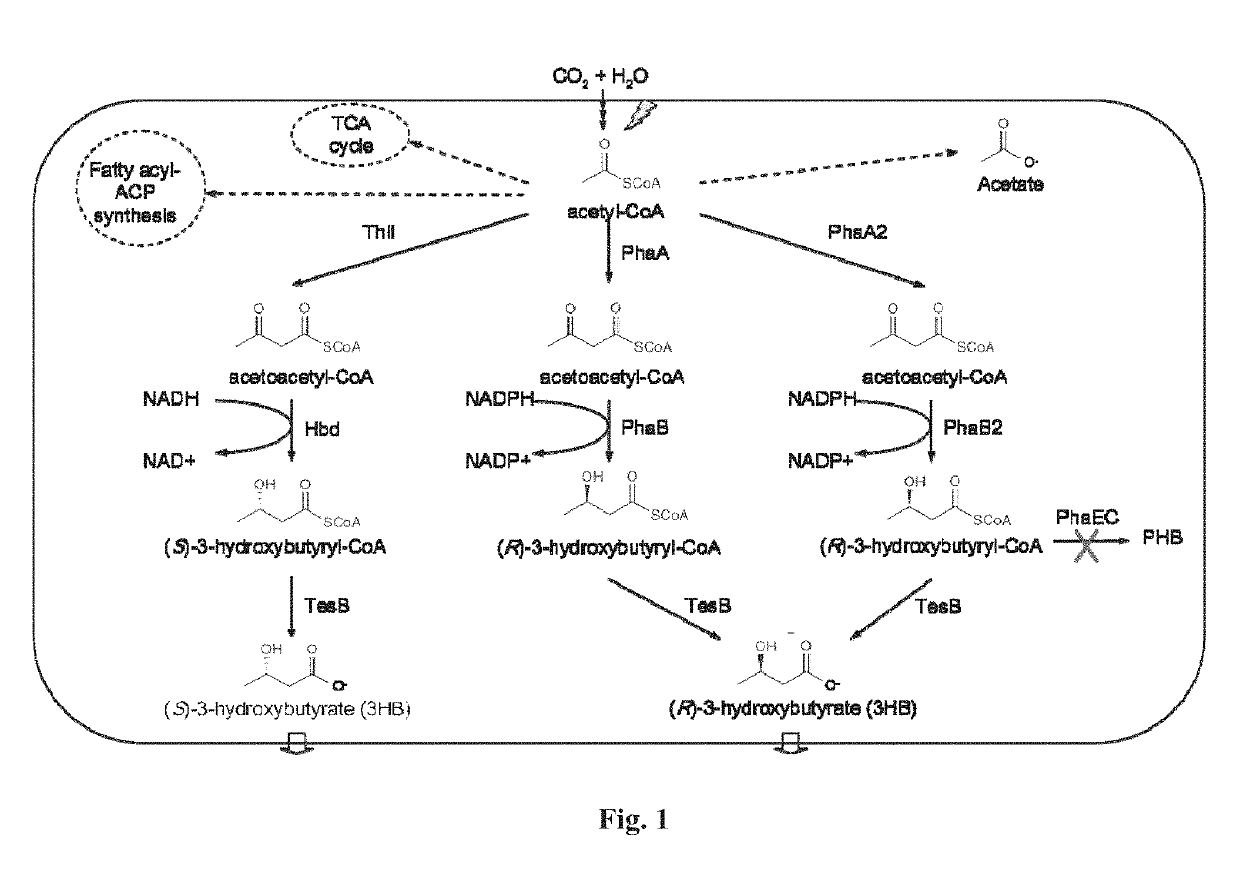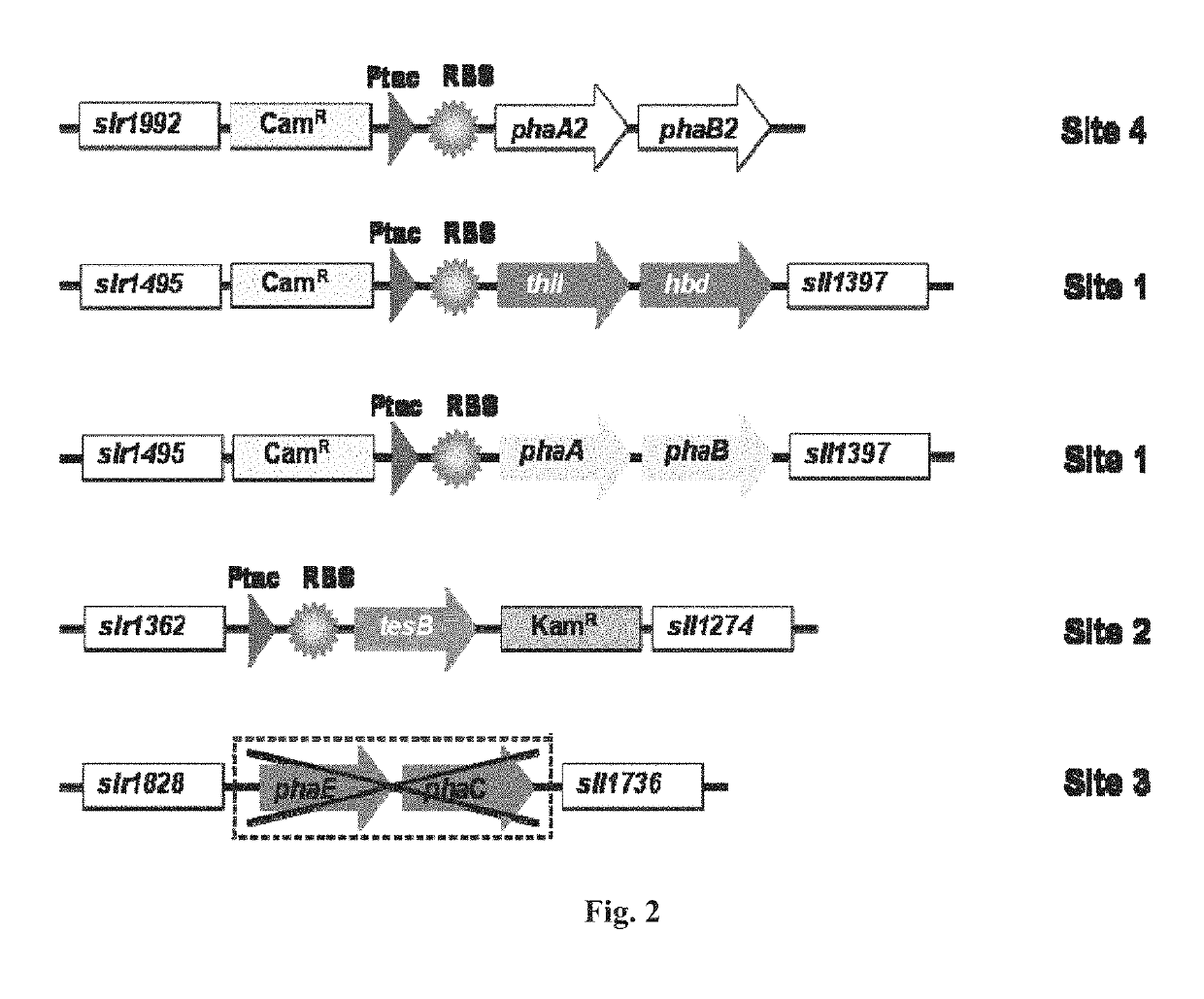Photosynthetic production of 3-hydroxybutyrate from carbon dioxide
a technology of carbon dioxide and photosynthesis, applied in the direction of enzymology, transferases, energy input, etc., can solve the problems of increasing atmospheric concentration, reducing the survival reducing the utilization rate of petroleum resources. , to achieve the effect of reducing the death rate of human neuronal cells, facilitating collection, and improving purity
- Summary
- Abstract
- Description
- Claims
- Application Information
AI Technical Summary
Benefits of technology
Problems solved by technology
Method used
Image
Examples
Embodiment Construction
[0027]In a first aspect, this disclosure relates to engineered strains of Synechocystis. 3HB synthetic pathways in cyanobacterium Synechocystis 6803 were constructed and demonstrated highly efficient photosynthetic production of 3HB using solar energy as the sole energy source.
[0028]In a second aspect, this disclosure relates to highly efficient photosynthetic production of 3HB using bicarbonate or CO2 as the sole carbon source by engineered Synechocystis.
[0029]In a third aspect, this disclosure relates to biosynthesis of 3HB in a process coupled with oxygenic photosynthesis in engineered Synechocystis.
[0030]In a fourth aspect, this disclosure relates to highly efficient secretion of hydrophilic 3HB molecules by engineered Synechocystis without overexpression of specific transporters.
[0031]In a fifth aspect, this disclosure relates to multi-cycle or continuous photosynthetic production of 3HB from engineered Synechocystis.
[0032]In a sixth aspect, this disclosure relates to photos...
PUM
 Login to View More
Login to View More Abstract
Description
Claims
Application Information
 Login to View More
Login to View More - R&D
- Intellectual Property
- Life Sciences
- Materials
- Tech Scout
- Unparalleled Data Quality
- Higher Quality Content
- 60% Fewer Hallucinations
Browse by: Latest US Patents, China's latest patents, Technical Efficacy Thesaurus, Application Domain, Technology Topic, Popular Technical Reports.
© 2025 PatSnap. All rights reserved.Legal|Privacy policy|Modern Slavery Act Transparency Statement|Sitemap|About US| Contact US: help@patsnap.com



